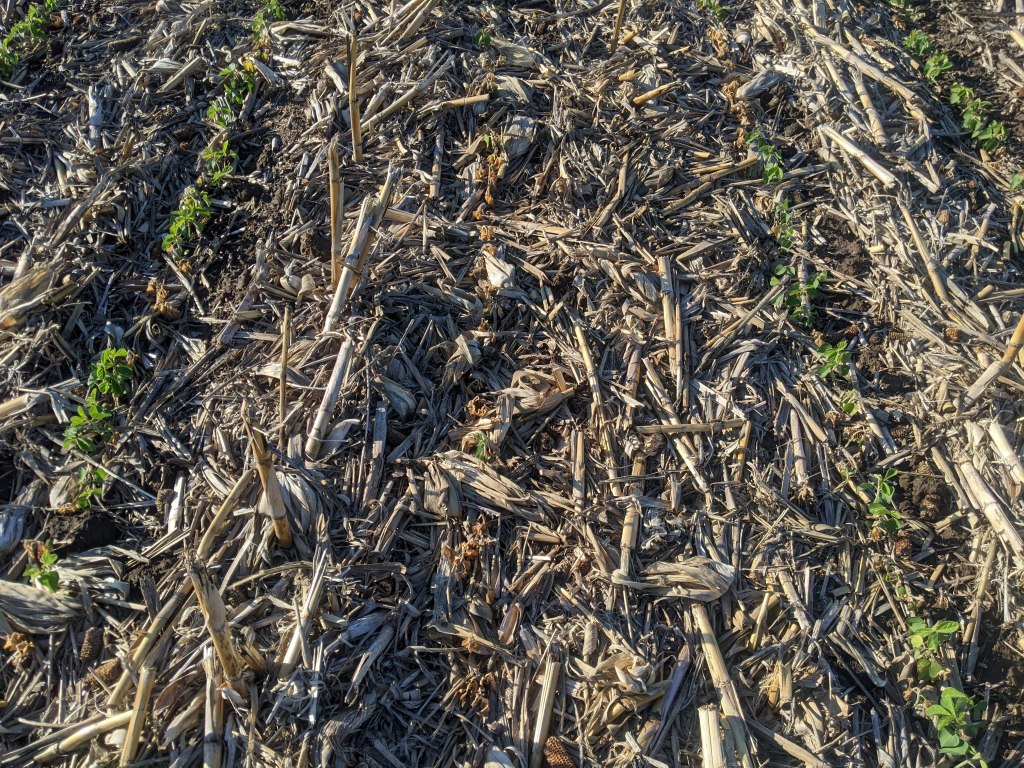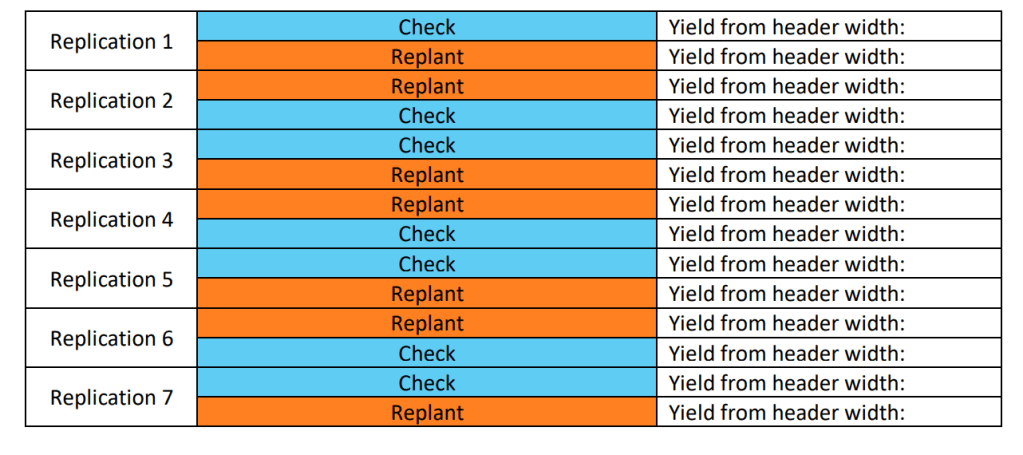Blog Archives
JenREES 5/30/22
Thankful today for all those who paid the ultimate sacrifice for our freedom, that our flag is still flying and for the freedoms we still have. May we never forget freedom isn’t free.
Frost Damage: Looked at a lot of fields this past week for frost damage, particularly bean fields. A key for evaluation is making sure the hypocotyl (the portion below the stem) is still firm and not pinched in any way or soft. Then exam the cotyledon area as there is an axillary bud next to each cotyledon which can shoot new branches. The rest of the upper-most plant may die, but as long as the cotyledon area is healthy, the plant should live. I have pictures to show this at jenreesources.com and we go into more detail in a CropWatch article at: https://go.unl.edu/e3si.
There’s a lot of situations with one or two rows damaged, but the damage alternates between the two. There’s many situations where there’s several rows of beans missing in patchy areas of drilled or planted fields (however, it’s not the entire row in any field I’ve looked at). Some of the patchy areas of fields are between 30-65K while other portions of fields are 100K or over. Beans are incredible at compensating and they will branch to compensate for no plants in an adjacent row. I just keep wondering about damaging the yield potential already there from these early planted beans to slot more in. I realize I would leave things at a lot less population than many are comfortable with and our recommendation is to leave fields with at least 50K. One needs to consider history of weed control in these fields as well. Each decision to leave a stand or replant is an individual and field-by-field one. I still am encouraging anyone who wishes to slot some in to consider planting a strip, leaving a strip, and alternating that at least 3 times. (Or if you’re drilling beans, you may need to make a round instead of a pass). The goal is to get two combine-widths from each planted/drilled area. This at least would be a way to see for yourself if slotting the beans in made any difference for you and please let me know if you are interested in doing this! If you do slot beans in, we’d recommend going with as similar of maturity as what the original maturity was until June 15. Ultimately, I just wish you the best in the decisions you’re making.
York County Progressive Ag Safety Day will be Tuesday, June 14th, 2022 8:30 am – 1:00 pm York County Fair Grounds York, Nebraska. This is a fun-filled day of learning for school-aged children. Topics for demonstrations and discussions include: Electrical Safety, Pipeline-Gas Safety, Grain Safety, ATV/UTV Safety, Look-a-Likes, Power Tool Safety, Equipment Safety, and Internet Safety. The registration fee is $5.00. This safety day includes lunch, snacks, a T-shirt, and a take-home “goody” bag. Registration is due by June 7th to ensure a t-shirt and take-home bag. Please register with the York County Extension office at (402) 362-5508. Sponsors include York County Farm Bureau, York Co. Extension, Wilbur-Ellis, and Black Hills Energy.
Weed Management Field Day will be held June 29 at South Central Ag Lab near Clay Center. Growers, crop consultants and educators are encouraged to attend. The field day will include on-site demonstrations of new technology and new herbicides for corn, soybean, and sorghum. An early morning tour will focus on weed management in soybean and sorghum followed by a tour of weed management in field corn. Field experiments will provide information for weed control options with various herbicide programs.
Three Certified Crop Advisor (CCA) Continuing Education Units are available in the integrated pest management category. There is no cost to attend the field day, but participants are asked to preregister at http://agronomy.unl.edu/fieldday. A brochure with more info. is located at the website. The South Central Agricultural Laboratory is five miles west of the intersection of Highways 14 and 6, or 13 miles east of Hastings on Highway 6. GPS coordinates for the field day site are 40.57539, -98.13776.




JenREES 5/23/21
Crop Update: Grateful for when the rains were light to break crust and grateful for sunshine this weekend! Hoping weather works out for those who need to finish up planting! For those whose beans were further along, have received comments about crusted soils and lower soybean populations. A general guideline is to leave a field alone if plant populations are greater than 50,000 plants per acre, the stand is fairly uniform, and the field can be kept fairly weed free. I don’t have research going down to 50K, just observation. As you assess plant stands, keep in mind that a gap in one plant row will be compensated by plants in the adjacent flanking rows. They will form extra branches to take advantage of the sunlight. Thus single-row gaps may not be as yield-reducing as you might think, especially in narrower row spacings.
Soybeans greatly compensate for reduced populations by increasing branching. Nebraska On-Farm Research from eastern Nebraska and western Nebraska from 2006-2018 showed only a 1.3 bu/ac yield increase when seeding 180,000 soybean seeds/acre compared to 90,000 seeds/acre in 15-inch or 30-inch rows. (No studies were in sandy soils). Average final plant stands became 154,924 vs. 83,067 plants per acre respectively. Specific examples with lower final plant stands follow:

- A non-irrigated field in Nuckolls County in 2006 was hailed at the cotyledon stage, so planted populations of 100K, 130K, and 160K became average actual stands of 74,417; 89,417; and 97,917 plants per acre with a 4 bu/ac yield difference between highest and lowest plant populations. The average yield in the field was 40 bu/ac.
- A York County irrigated field in 2018 comparing 90K, 120K, and 150K became final plant stands of 60,875, 88,125, and 121,750 plants/acre with yields of 93, 94, and 97 bu/ac respectively.
Every challenge also provides opportunities for learning. So, if you consider replanting, consider leaving some check strips and/or consider an on-farm research study. To do this, consider:
replanting 2 combine widths, skipping 2 combine widths, replanting 2 combine widths, skipping 2 combine widths, replanting 2 combine widths.
It’d be great if you could do that even more often across the field, but just that pattern mentioned above will give you 4 reps that would give you more confidence in the yield results obtained. A Platte County grower did this in 2014. He originally planted 145,000 seeds/acre on May 10 no-till into heavy corn residue. With a plant stand of 75,000 plants per acre, he chose to replant soybeans in strips across the field. He left the original stand and planted an additional 145,000 seeds/acre. Final yields were 58 and 57 bu/ac for the original and replanted stand, respectively. Please let me know if this is something you’re interested in and I’d be happy to help you.

Weed Guide Survey: The Weed Guide has been published since 1960 with over 15,000 copies printed each of the past 5 years. Please consider completing a survey to help us understand the latest trends on how our customers use the weed guide and its value to you: https://ssp.qualtrics.com/jfe/form/SV_1ImdUrOCRmUq9Uy. We really do need and value your input!
Progressive Ag Safety Day June 3: This is a fun-filled day of learning for school-aged children and will be held at the York County Fairgrounds from 8:30 a.m.-1:00 p.m. on June 3. Topics for demonstrations and discussions include: Electrical Safety, Pipeline-Gas Safety, Grain Safety, ATV/UTV Safety, Look-a-Likes, Power Tool Safety, Equipment Safety, and Internet Safety. The registration fee is $5.00. This safety day includes lunch, snacks, a T-shirt, and a take-home “goody” bag. Register with the York County Extension office (402-362-5508). Registration is due by May 25th to ensure a t-shirt and take-home bag; however, please do sign up even after May 25th if you read this after the date! We’d rather have the youth get signed up as this is a great learning opportunity! Contact the York County Extension Office (402-362-5508) or Jason Perdue (402-366-2821) for additional information. We hope to see lots of youth there!


